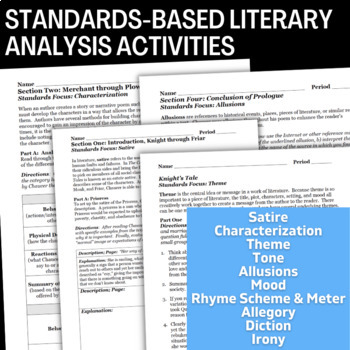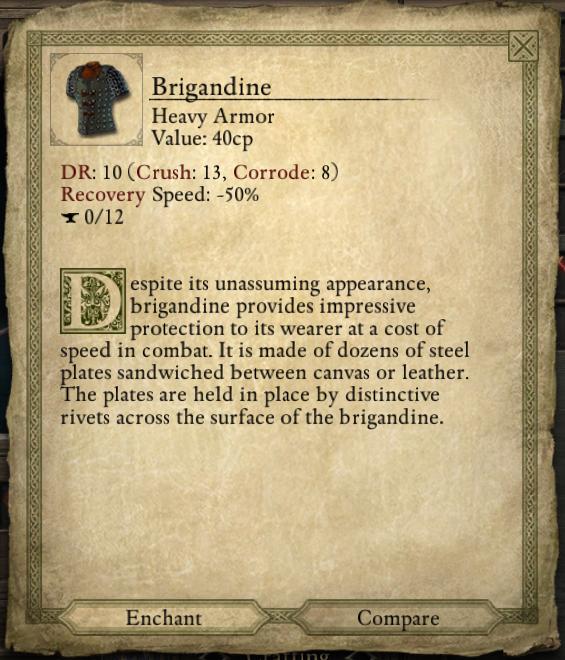- Canterbury Tales Projectmac's Literature Classes -
- Canterbury Tales Projectmac's Literature Classes Online
- Canterbury Tales Projectmac's Literature Classes Youtube
1 The Doctor (Canterbury Tales) 1.1 Summary 1.2 Description 1.3 Social Status 1.4 The Doctor's Tale 1.5 Symbolism 1.6 Middle English 1.7 Works Cited The Doctor is one of the most important characters' in Geoffrey Chaucer's book The Canterbury Tales. The Doctor is part of the Middle class and is one of the best doctor's alive in Medieval England. He uses remedies like blood-letting and tricks. About The Canterbury Tales. Other collections of tales existed before Chaucer's, the most famous being Boccaccio's Decameron, in which three young lords and seven young ladies agree to tell tales while they stay in a country villa to avoid the plague that is ravaging the cities.
Social class have the ability to have many definitions depending on how many people are being asked. Some may say, it’s a way for people to be put in categories solely based off their financial stance or some may say it’s only a set of titles based on social status. Social class is a broad group in society having common economic, cultural, or political status (Dictionary.com, 2018). Dating back to the Middle Ages, which is the time frame “The Canterbury Tales” was set in, social classes were very clear and distinctive. Figuring out which character is associated to a social class within the feudalism system is the task. There are four groups that makes the entire Feudalism system. The wealthiest class with the most respect is royalty, which is followed by the noble. Both royalty and noble had a few things in common, one being clothes made from fine materials with bright colors and fancy food covered in seasonings that were devoured by the rich and served by the poor (The Middle Ages, 2018).
NOBLE

Close to the top of the system are the knights covered in their bright and shining armor filled with padding to help sooth the pain. Everyone isn’t fortunate enough to be a knight; you have to be the child of someone who’s placed in the noble class. After making the decision to take this route you’re taught multiple languages and fighting skills that helps you surpass the level of a squire. Knights typically travel around the world, stay in castles, and serve their king (The Middle Ages, 2008). Chaucer describes the knight like none other; the narrator uplifts the knight more than any other character. “A KNYGHT ther was, and that a worthy man, That fro the tyme that he first bigan To riden out, he loved chivalrie, Trouthe and honour, freedom and curteisie. Ful worthy was he in his lords were, And therto hadde he riden, no man ferre” (Chaucer, 2007). In other words the knight is someone who is generous and holds a high value in truth and honor. The narrator also doesn’t describe his attire that much but goes into detail about his horse. “His hors were goode, but was nat gay.” (Chaucer, 2007). To have a well-kept horse was to mean you had some sort of wealth. The secondary sources describe the knight as someone who sports the finest metal, but Chaucer tells us that he’s not “gay”. The knight isn’t flashy with his attire that may signify his financial status but his military padded coat stained by armor shows his feudal system status. (Chaucer, 2007). Reading the description Chaucer gave of the knight son who was a squire, was a way to notice the knights financial status. The squire was able to ride horses really well, write words with music, and could draw. Being able to learn and gain knowledge wasn’t cheap or affordable for people without money.
CLERGY
Next in the feudalism system would be certain members of the church, or “the clergy”. The clergy is mostly made up of the church but wasn’t really considered one of the social classes of the Middle Ages seeing the differences in positions. (Newman, 2018). The clergy has its own ranking system within. Bishops being the highest and the wealthiest who would be considered noble followed by the priest, monks, then Nuns who would be considered in any class above peasants and serfs. Bishops weren’t as powerful in the church as the priests were but wore nicer clothes, involved with the court, and lived in the same areas as the nobles. Bishops were considered to be involved with the nobleman class because of their influence on the society, bishops also were extremely wealthy due to the fact that they collected taxes. (Medieval Feudal Hierarchy, 2018). Also when using Voyant tool, I was able to do text mining in the Canterbury Tale text with the word “Bishop” and was able to read how bishops are invited to a ceremony with the lords and knights of high renown during the “Man of Law Tale”. Being Priest had one job, and that job was to cater to the public spiritually. Monks were smart scholars who taught the children of the nobles and worked doing manual labor such as gardening to provide for their need financially. Nuns weren’t taught the same things Monks were taught but being a Nun was a job that many wanted their daughter to do just to have a future secured, Nuns catered to the public similar to the priest as well. (The Middle Ages, 2008). After reading the chapter about the monk’s adventures and comparing it to other author’s description, the monk didn’t represent your average monk. This monk was dressed in much expensive clothing and lived more of a noble lifestyle. The Monk was also a bad representation of the church.
TRADESMEN / MERCHANTS
Canterbury Tales Projectmac's Literature Classes -
After the clergy system would be the tradesmen or merchants, which is occupied by people who worked jobs with a specific skill. Nba elite 11 trailer. In this class people made a decent living seeing that they were the only ones who can do whatever job it was that needed to done. From being a blacksmith to being Barber, only they can do those jobs. Often times someone’s surname would tell you what their occupation is or what someone in their family occupation is. (The Middle Ages, 2008). The characters that fit this description the best would be the tradesmen. There are five members in this group each holding specific skill, one being a weaver, a carpenter, and a carpet maker. Each member is wealthy and attends church.
12/11-Quiz 9.2/10.1 Practice: Writing & Graphing Functions Review 12/12- Interpreting and Writing Equation Review Quiz Back/Corrections Practice- Review Concepts 5-7 12/13-Go over HW Quiz 9.3/10.2 Dan Meyer Graphing Stories UNIT TEST TUESDAY Week 14 12/2-Writing Linear Functions Practice: pg. Contact Info Phone #: (248)684-8060 E-mail: Andrea.Colville@hvs.org. Quiz 7.3, 8.2 Practice-Week 12 11/19-Quizzes Back Representing Functions Practice- 6.2 Practice in RAP 11/20- Quiz Concept 7.2 & 8.1 Practice-Turkey Break!!! Week 11 11/12-Warm Up-Haircut Writing and Analyzing Equations Practice- Slopes and Intercepts Wkst (Bath Tub Wkst) 11/13-Writing Equations in Slope-Intercept and Standard Form. Unit 2 TEST Tue 12/18 Week 14 12/3-Warm up, Check practice, Inequalities Guided Review ws Practice-Finish review ws & Study!! 12/4-Check practice, Quiz 7.2, 8.1, Solving Inequalities ws 12/5- Check practice, Graphing and solving Inequalities guided notes (side 2) (x or / by negatives). Old unit 2 agendamrs. colvilles math class.
PESANTS
Last but not least are the peasants, had a tough life in the Middle Ages. It was it wasn’t rare to see a peasant working as a farmer or doing hard labor work, but it was common to see a peasant without freedom. All Peasants didn’t have underwear, meals contained bread, porridge, vegetables, and maybe meat. They were people who had a strong belief in religion and died from either harsh weather conditions or starvation (The Middle Ages, 2008). There aren’t any characters who are called peasants but fit the description very much so. The ploman, the oxford cleric, and the parson each is very poor, tends to help other people, and is very religious people.
KEY TERMS
• Bulse – a package of diamonds or gold dust
• Flactchet – sword
• Heanling – humble
• Blonk- powerful horse
• Chinkers – money
• Cosh – hut
• Flag-fallen – unemployed
• Fleak – insignificant person
• Maw-wallop- mess of food
• Theow – slave or servant
• Thigging – begging
• Vassals – local lords
• Velleins – peasants but not slave nor free

Canterbury Tales Projectmac's Literature Classes Online
CONCLUSION
Canterbury Tales Projectmac's Literature Classes Youtube
After doing text mining while using Voyant tools, I’ve come to the conclusion that doing a comparison between secondary sources and the actual text of Canterbury tale was more helpful for me to figure which characters fit the feudalism system social classes the best. I did some research and was able to discover common terms used during the Middle Ages which I put inside of the trend graph and not one word appeared in any chapters. I had better luck using my own knowledge and used words that I thought were used in Middle ages that described wealth and poverty. There also weren’t any findings that would discredit secondary sources regarding the feudalism system in the Canterbury Tales because characters who don’t fit the full description of their occupation and duty are special. For example, the monk in Canterbury Tales isn’t your average monk who is solely focused on god and church duties. The monk wears some of the finest clothes and is someone the church wouldn’t be proud to claim in the text. The biggest similarity that interest me the most between the feudalism system and the system we currently live in now would be how peasants are the hardest working class yet they aren’t paid for their true worth. In our system, it reminded me of how our teachers, police departments, and fire departments how some of the most important jobs they’re not paid the amount of money that would signify their importance to our society.

